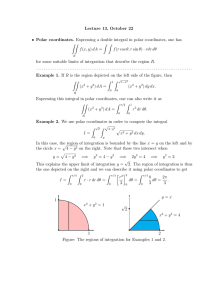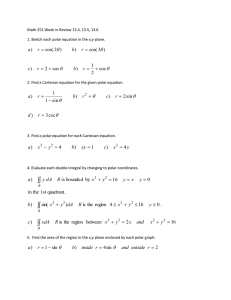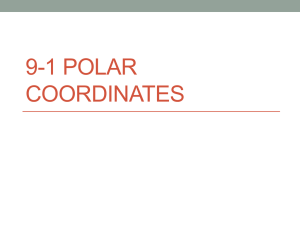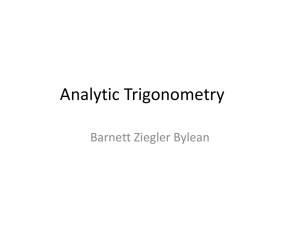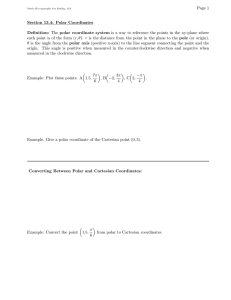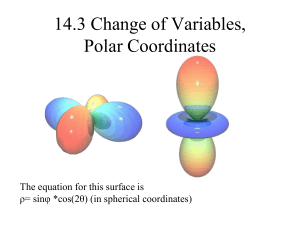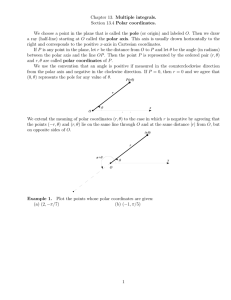13.4 Polar Coordinates
advertisement
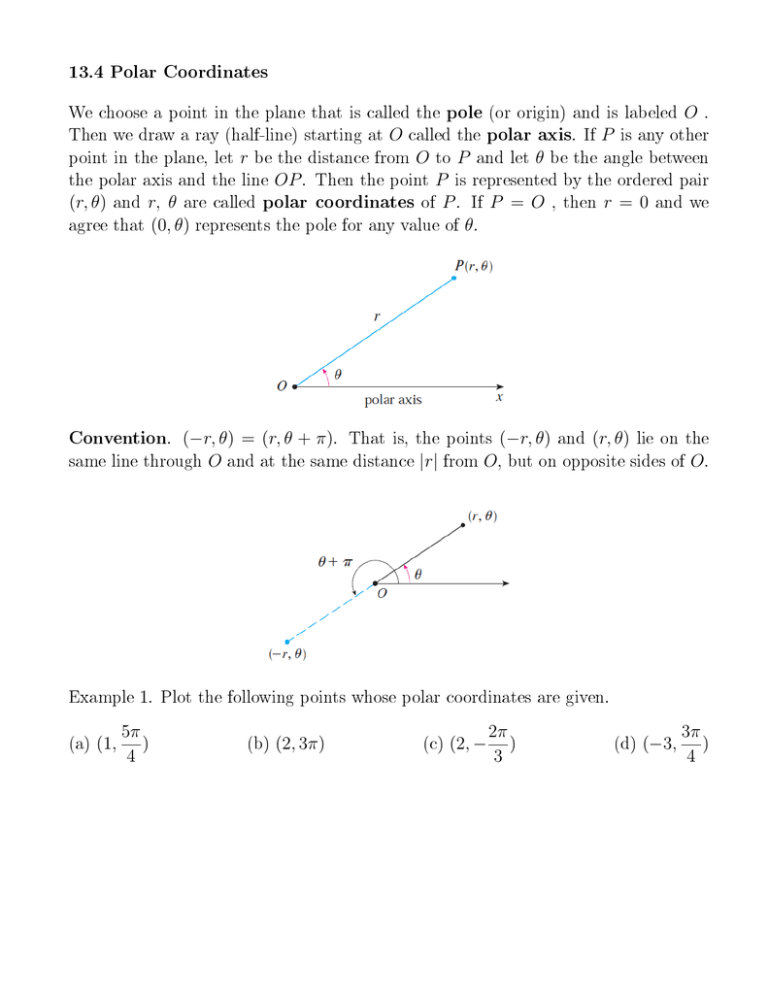
13.4 Polar Coordinates We choose a point in the plane that is called the pole (or origin) and is labeled O . Then we draw a ray (half-line) starting at O called the polar axis. If P is any other point in the plane, let r be the distance from O to P and let θ be the angle between the polar axis and the line OP . Then the point P is represented by the ordered pair (r, θ) and r, θ are called polar coordinates of P . If P = O , then r = 0 and we agree that (0, θ) represents the pole for any value of θ. . (−r, θ) = (r, θ + π). That is, the points (−r, θ) and (r, θ) lie on the same line through O and at the same distance |r| from O, but on opposite sides of O. Convention Example 1. Plot the following points whose polar coordinates are given. (a) (1, 5π ) 4 (b) (2, 3π) (c) (2, − 2π ) 3 (d) (−3, 3π ) 4 The connection between polar coordinates (r, θ) and Cartesian coordinates (x, y) is and x = r cos θ y = r sin θ r2 = x2 + y 2 tan θ = Example 2. Convert the point (2, y x 2π ) from polar to Cartesian coordinates. 3 Example 3. Represent the point (1, −1) with Cartesian coordinates in terms of polar coordinates. Graph of Polar Equations Example 4. What curve is represented by the polar equation r = 2? Example 5. Sketch the polar curve θ = 1. Example 6. Sketch the region in the Cartesian plane consisting of points whose polar coordinates satisfy the following conditions: 1 ≤ r ≤ 2, π/4 ≤ θ ≤ π . Example 7. Sketch the polar curve r = sin θ and nd a Cartesian equation for this curve.

